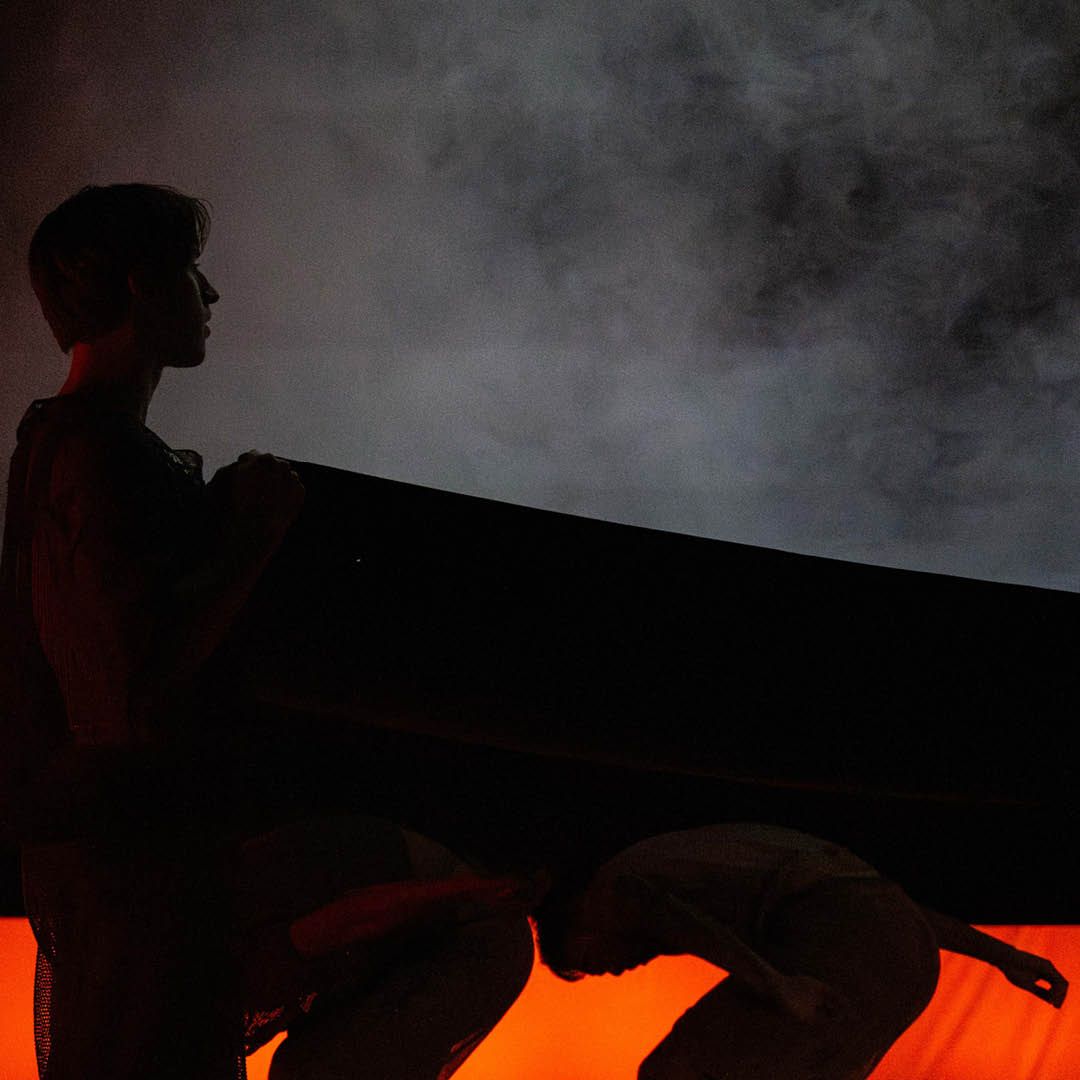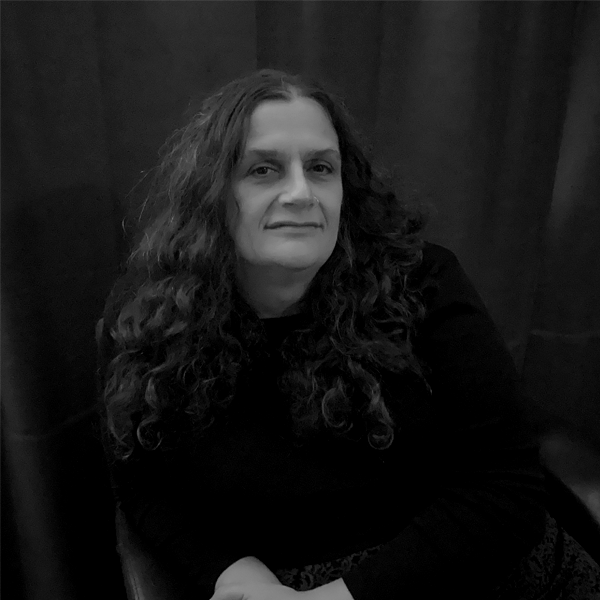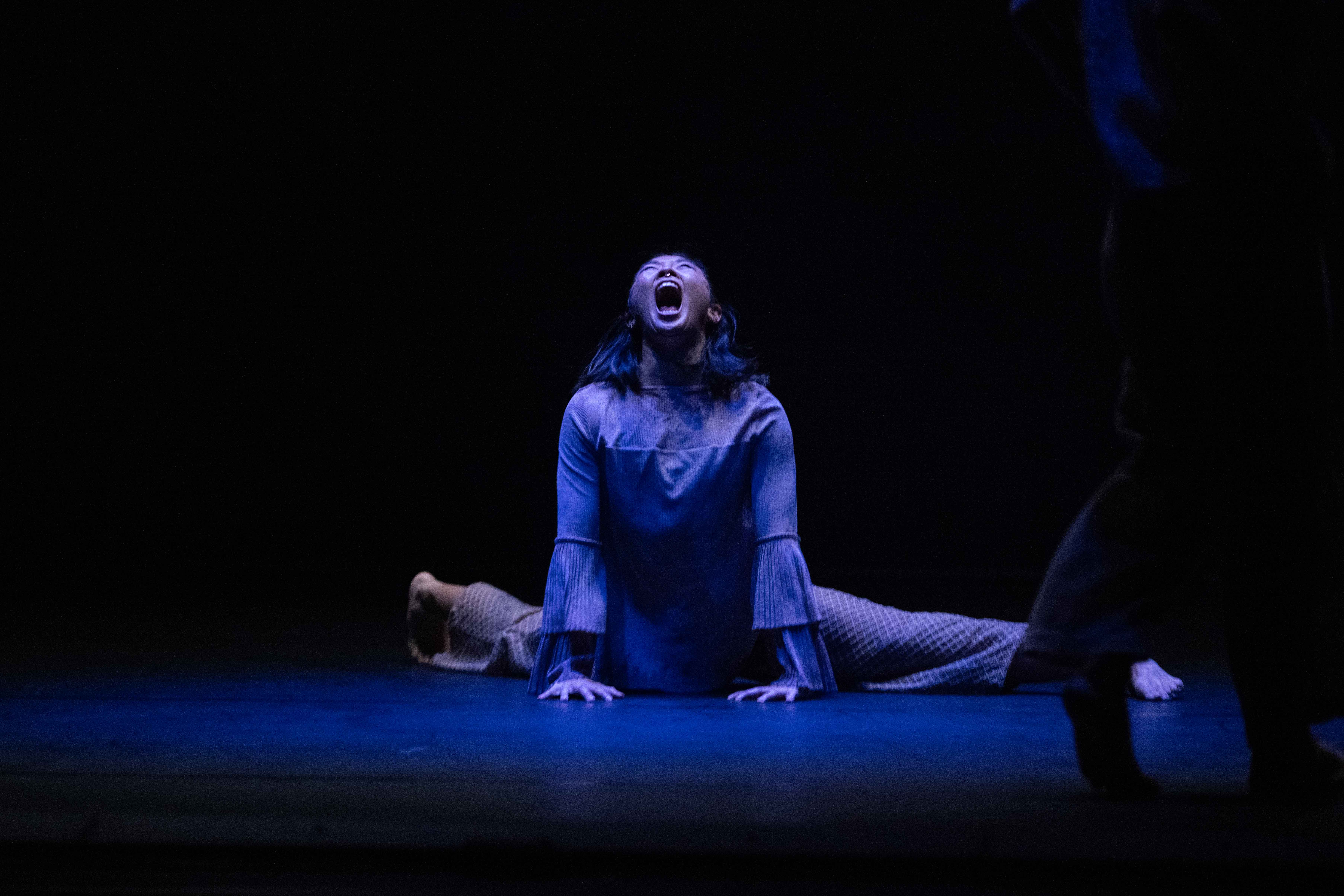
Marrow: Through the Bone
Award-winning Noongar novelist, poet and essayist, Claire G. Coleman explores how Daniel Riley's Marrow seeks to cleanse, heal and challenge Australia.
Smoke moves like a dancer and dancers move through the smoke. This is art that cuts to the bone – and if it cuts deep enough it might help heal the rift in Australia.
I love word play and the simultaneous beauty and ugliness in the sound of words. Sometime in my early teens my dad, always a wag, pointed out to me when I was going to a rave, that there was only one letter difference between “rave” and “rage”. While watching Marrow at Australian Dance Theatre in Adelaide that observation by my father jumped unbidden to the front of my mind. I saw the show, which calls itself a ceremony and a rave in its promotional material, twice, on its second last and last performance of the 12-week tour, when they returned home to the Odeon in Norwood, a leafy inner suburb of Adelaide.
The Australian Dance Theatre is an Adelaide institution and an Australian cultural icon based on Kaurna Yerta. Founded in 1965 as a home for contemporary dance they relish in dance that is different from what people might expect from the form, what the company calls on its own webpage, quoting their founder, “ugly dance” – not intentionally ugly but instead focusing more on the artistic intent than aesthetics. Sixty years young it has had 6 artistic directors in those 6 decades of operation. Daniel Riley, who has been in the position since 2022, is the 6th and the first to be First Nations; he is in fact the first Indigenous artistic director of a non-Indigenous dance company in the history of so-called Australia.
When I sat down with Daniel Riley he said “It comes with its challenges … to be the first blackfella to run ADT. There’s lots of organisational, systemic, challenges. Also, expectations … external expectations and viewpoints that I’ve had to change, to continue to have these dialogues with the way we think as first peoples and our landscape and broader thinking around leadership, the creation of our work, and how we drive our work forward.
“I’ve often found there’s been some difficult conversations on all levels to get my point of view across”. He has had support throughout this challenging process from the entire company and from Executive Director and Co-CEO Nick Hays. It was a process worth going through and a decision that has paid off.
It was a brave move, in these racist times, for ADT to hire an Indigenous dancer and choreographer as Artistic Director. They would have expected to receive criticism for the decision; so often when people cite merit they are referring to whiteness. But it’s their job to be brave, and it’s the job of artists to be brave; the same courage should be expected of performing arts companies who create culture, who lead society towards a more cultured and empathetic future. Founding Artistic Director Elizabeth Cameron Dalman AM CdOAL intended the company to be provocative, to create art with moving bodies, so the decision to elevate Daniel Riley should not be controversial. It has made the company precisely what ADT is intended to be.
It’s important to elevate Indigenous viewpoints in the arts because they belong here on this continent. “The Australian Aboriginal viewpoint is something we can only have here. Therefore, it makes our work that much richer” Riley pointed out. “We can, as blackfellas, bring a strength – a different point of view to every organisation at any level whether that be as a performing artist, a creative, a staff member, a board member.
“Our work should reflect the diversity of the community we make it for – our audience and ensemble are full of people from every walk of life. And we want to speak to and represent those experiences through our work. What that can do is sometimes create a friction depending on the viewpoint of the audience.”
Perhaps that friction is fertile.
The second production by ADT for 2025 is Marrow, a powerful indictment of racism in so-called Australia inspired by the failed 2023 Indigenous Voice to Parliament referendum. It cuts right through the bone and leaves you with questions about the very nature of Australia.
Marrow has had the longest tour by ADT in decades; and the quality of the works produced by the company under Riley’s stewardship is outstanding. So, if having a First Nations artistic director was a risk it was a risk that paid off, Riley’s work is extraordinary. In his short tenure he has increased the renown of the company and revived their touring route, turning the company into one of increased national significance. As Riley told me, “We need to be touring regionally, nationally and internationally. It’s taken 4 years since I arrived in 2022, but we’ve reestablished our regional and our national touring circuits”.
A blue wren looks on from under a spotlight at the front corner of the stage as a reminder; his story loaned, gifted to the company by Uncle Moogy Sumner AM, the Elder who welcomes us to the theatre on the last night of the tour. The story of the blue wren is a warning, the bird is punished for cheating, like the Lucky Country Australia it flew too high – higher than it had earned. Aboriginal Australia are being punished for our ambitions, we always are. When we dare to dream of being equal, of having our land back, of a voice to parliament, we are punished for it; the negative response to the voice referendum has created an Australia where we are worse off, even less well respected, than before we dared to dream.
The beat is relentless like a heart, sub woofers shaking the floor and our seats. We could be at a doof (an Australian slang word for a rave) sweating together in a culture that tended towards togetherness and diversity. But we are not sweating, we are not writhing, we are not gesticulating and exalting to the pounding beat, we are not dancing. That is reserved for the six on stage who are doing the feeling for all of us as they leave their sweat on the stage. This is a ceremony, as raves often were, and we have a chance to heal in the beat and the movement, but before we heal, we have to feel. Before we heal, we have to understand. As Robert Frost wrote in A Servant to Servants in 1915 “the best way out is always through”.
We cannot heal Australia, the country cannot heal, until we understand what Australia is; until we go through the pain, through the stuff Australia doesn’t want to talk about.
I wonder if Marrow hits differently for different audiences, if the emotional reaction was different for Indigenous members of the audience than for the majority who were not Indigenous. I wonder the same thing about the dancers, because despite Daniel Riley being himself Aboriginal the majority of those on stage are not. The ensemble in fact are a pretty good sampling of multicultural Australia. It surely must be contextually unique for each member of the audience and for each of the performers; it must be tempered by who we are. Art is a collaboration between the maker and the audience (when I asked Riley if he thought that was true, he agreed) and therefore the life of each audience member becomes part of the work for them.
Riley added, “all of the work I’ve made here I’ve always thought about ‘what are the audience leaving with’ I don’t want the audience to walk down the street, go to dinner have a drink and all of a sudden be talking about something different.”
It doesn’t matter what you think or thought of the Voice to Parliament, I have heard reasonable arguments from Indigenous people for the Voice being the wrong path. However, as legendary activist Gary Foley prophesied,'once the referendum was called, a ‘no’ vote would be a disaster'. Whether you were for the Voice or against it you would have noticed surely that people are using the failed referendum as an excuse to call for rolling back of Indigenous rights. In my opinion the voice was a chance to heal the country. Instead the failed referendum left us with a country in even more need of healing.
In Aboriginal culture smoke is used as a ceremonial sacrament; to stand in the smoke, to wash yourself in smoke, is a ritual purification. Smoke is all over Marrow, delivered by a hand-held smoke machine, washing the dancers, the black flag used as the main prop, the stage, the audience. The most striking moment is when company dancer Karra stops to break the fourth wall, taking a moment to stare accusingly at the audience. In the end, after the audience is judged, smoke washes her clean and cleanses her soul.
Indigenous art is a political force, “I think there is a level of protest to all our work” said Riley.
By the end I don’t know whether to rave or rage in all their meanings – To rave: to talk excitedly or to dance to techno. To rage: to give in to righteous anger or to party - perhaps too hard. Australia needs to reckon with itself, not just mainstream Australia but Indigenous people too. We believed the country would do the right thing, we believed the country could move on, some might be tempted to say we, and the government, were foolish, we flew too high and now we are being punished.
Or perhaps the majority of Australians are just THAT racist.
Of course it’s not over. Cultural change is possible, and the arts and artists are the engine room for cultural change. Australian Dance Theatre having the ambition to place someone like Daniel Riley in the position of Artistic Director and to stage works like Marrow that confront the truths about the sort of country Australia really is a huge part of driving the necessary changes. It would be nice in the current political climate if that kind of courageous ambition became normal.


Photo by Morgan Sette